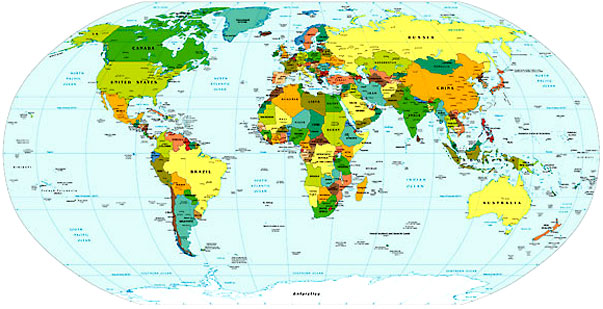 Growing up in Australia I heard a lot about the Solomon Islands—especially about Bougainville, and autonomous region where civil war raged through much of the 1990s—Australian troops were involved in peacekeeping and truce monitoring, and the conflict ended after New Zealand brokered negotiations. A few years ago one of my brothers, a reservist, talked about the possibility of a tour of duty there, but it never happened. I was in high school for most of the conflict, and so it was something in the air, but it floated in and out of my awareness while grunge took a more permanent position in my life. And violence hasn’t stopped—in 2003 Australia led a multi-national force to restore peace and disarm militias. But then, I feel like that’s not atypical even now—most people would have some awareness of the situation in Iraq or Zimbabwe, but are likely to have only the haziest notion of other conflicts going on in other parts of the world—and, even in the politically aware DC, are probably at least as likely to be able to tell you what celebrity scandals are going on this week. But the Solomon Islands are, so to speak, in Australia’s backyard—so, like happenings in East Timor, Indonesia and Papua New Guinea, they get our attention. In the last few years unrest has continued, and international presence has continued.
Growing up in Australia I heard a lot about the Solomon Islands—especially about Bougainville, and autonomous region where civil war raged through much of the 1990s—Australian troops were involved in peacekeeping and truce monitoring, and the conflict ended after New Zealand brokered negotiations. A few years ago one of my brothers, a reservist, talked about the possibility of a tour of duty there, but it never happened. I was in high school for most of the conflict, and so it was something in the air, but it floated in and out of my awareness while grunge took a more permanent position in my life. And violence hasn’t stopped—in 2003 Australia led a multi-national force to restore peace and disarm militias. But then, I feel like that’s not atypical even now—most people would have some awareness of the situation in Iraq or Zimbabwe, but are likely to have only the haziest notion of other conflicts going on in other parts of the world—and, even in the politically aware DC, are probably at least as likely to be able to tell you what celebrity scandals are going on this week. But the Solomon Islands are, so to speak, in Australia’s backyard—so, like happenings in East Timor, Indonesia and Papua New Guinea, they get our attention. In the last few years unrest has continued, and international presence has continued.The Solomon save been populated for thousands of years—the United Kingdom only established its claim in the form of a protectorate in the 1890s, until self-government arrived in 1976 followed quickly in 1978 by independence. So on 7 July the Solomon Islands celebrate Independence Day.
 On the Pacific front, World War II saw intense fighting in the Solomon, with the Allied Forces launching naval campaigns and amphibious landings on islands in the group in 1942, battling against the Japanese Imperial Force.
On the Pacific front, World War II saw intense fighting in the Solomon, with the Allied Forces launching naval campaigns and amphibious landings on islands in the group in 1942, battling against the Japanese Imperial Force.After the war ended, the independence movement arose—Maasina Rua organised a campaign of civil disobedience and strikes, leading to the jailing of the movement’s leaders. Other indigenous dissident groups arose in the 1950s until gradually the islands gained more authority over their governing.
Last year in April an earthquake occurred and was followed by tsunami—the death toll was relatively low, but thousands of people were left homeless.
During my music degree I studied ethnomusicology for a while—it’s something that I’d like to go back to. At the time it was a minor part of my studies (though I wrote a rather passionate essay deriding exploitation of ethnic music for “Pygmy Pop”) but I’m increasingly interested in it. Not in that hip “world music of the week” way—but in the role music plays in different cultures. During the course of my studies I listened to quite a few recordings from the Solomons—their music is beautiful. Some of this music was used by Deep Forest for “Sweet Lullaby” and there was some controversy over this appropriation of local ethnographic musics. For anyone wanting to look it up, the original music that Deep Forest used is beautiful on its own.
A number of poets have their work available in English—the piece I have chosen is by Celo Kulagoe and comes from the anthology Nuanua: Pacific Writing in English Since 1980.
Where Leaves Had Fallen
The tree can only be seen
Where it stands.
The eye with the axe
Is also that with the chain
To cut and to haul down.
Each man with a finger
Would pick up a piece
And drag it home,
To dress, burn or ignore.
The lumber-man, he picks up
The trunk to chew,
While the squatter builds a hut
With the branches
To dream in.
The twisted twigs are only
What the old hag could bear
Down to her pot of stew,
Leaving the white chips
To the birds to cast
Over the lake as seeds.
But the gardener, he fights the wind
For the leaves—
The sight of experience
To read from their palms,
Their veins swollen with knowledge.
Their strength feeds the stump
To a new shoot.
—Celo Kulagoe
from Nuanua: Pacific Writing in English Since 1980


No comments:
Post a Comment